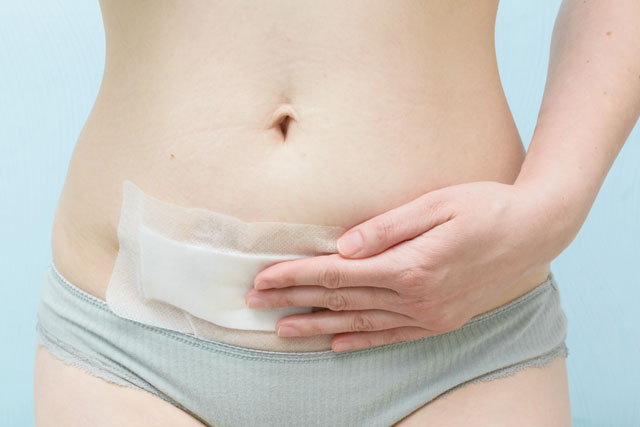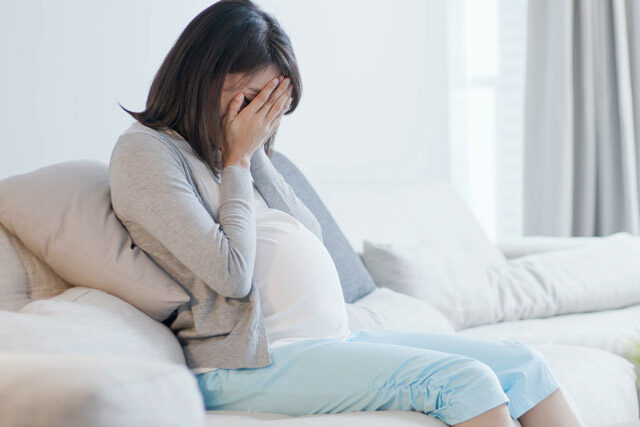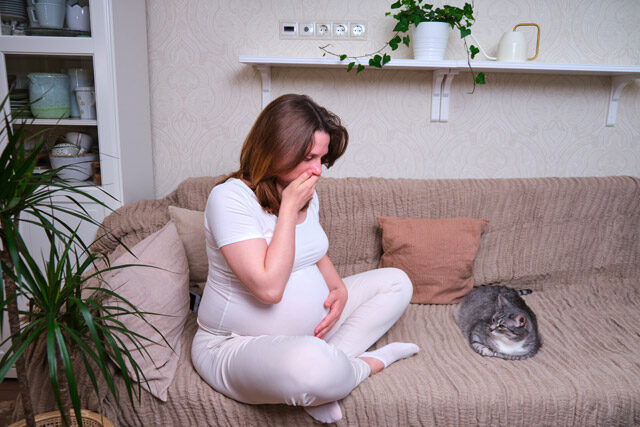The number of birth via Cesarean delivery in the USA is constantly growing. According to the information provided by the CDC, as of 2020, 31.8% of all pregnancies ended with a C-section. Some mothers-to-be have their surgery planned, while for others, it becomes unexpected and even shocking. But the main thing is to preserve the life and health of the mother and the baby. That’s what you should concentrate on instead of blaming yourself for not being able to deliver your baby via vaginal birth.
No matter why you have had to undergo this major surgery, you must know about the C-section postpartum. Specifically, we’ll talk about the vaginal bleeding that you will have.
Why Would I Bleed after a C-Section?
Many women don’t understand why they bleed if they have their baby via a C-section. So let us explain a bit.
Postpartum bleeding, also called lochia, happens in all women regardless of the delivery method. The blood appears from the sight in your vagina, where the placenta has been attached.
In the first 24 hours after the baby arrives, you’ll have heavy bleeding resembling a period at its worse. The primary difference between them is that lochia often contains blood clots. Sometimes their size may be as large as small fruit, like an apricot.
You may also experience light abdominal cramps, especially when breastfeeding your newborn. They are caused by your womb contracting and are absolutely normal and safe.
How Long Will I Bleed? How to Deal with the Bleeding?
The American College of Obstetricians and Gynecologists claims that the bleeding after a C-section will last from two to six weeks. The first week after delivery, the vaginal discharge will probably have a dark red color. As days go by, the bleeding will reduce, and its color will change to brownish and light pink.
In early postpartum, you’ll have to use thick maternity sanitary pads. But as you proceed in your recovery, you’ll be able to change them to thinner sanitary pads. You should avoid using tampons and menstrual cups for at least 6 weeks postpartum. This requirement aims to reduce the risk of infection in your genitourinary tract.
You can return to your preferred female hygiene products once your health care provider confirms it’s safe. Usually, this happens after your 6-week postpartum appointment.
When Should I See a Doctor?
Having undergone a major surgery, which a C-section is, you should be aware of the possible complications to know when it’s time to seek medical attention. Below, you’ll find a list of symptoms that should alert you and make you call your doctor:
- your vaginal bleeding has gone heavier instead of getting down;
- the vaginal discharge is bright red and contains a lot of blood clots, or they are large in size;
- lochia has an unpleasant smell, which may be a signal of infection;
- your bleeding is too intensive (you change pads more often than once an hour);
- you have a fever;
- your lower abdomen (uterus) is sensitive or painful to touch;
- your bleeding lasts longer than 6 weeks.
Incision Sight Concerns
Taking into account that you have to keep track not only of your menstrual bleeding but also of your incision sight condition. The wound should be kept clean and dry for fast healing. Your doctor will provide detailed instructions on how to take care of it.
Please note that bleeding from your C-section incision sight is an emergency that requires medical attention. You should also contact your health care provider if you notice any signs of infection, including the swelling of the scar, yellow, smelly discharge from the wound, and other things that may bother you.
Itching, the feeling of dryness, and numbness around the post-surgical wound are not reasons for concern.
How to Recover after a C-Section?
Like any significant surgical intervention, you will need time to recover after your C-section. Despite the need to take care of the baby, you shouldn’t forget about your needs. Here are some pieces of advice that may help you recover better:
- Get sufficient rest. Don’t dive into routine right after getting home. Take your time and give your body the care it needs.
- Ask for help. Postpartum is not easy, especially if you’ve had a C-section, so if you need help, ask your partner, family, or friends to help you. This will promote faster recovery and make this challenging period easier for you.
- Avoid excessive physical load. Power workouts should be postponed to at least a couple of months after delivery. Avoid lifting things heavier than your baby.
- Live healthily. Bring healthy habits to your daily life. Go for a walk, eat plenty of fruit and vegetable, and stay hydrated.
Bottom Line
Bleeding after a C-section is just one of the postpartum discomforts you have to deal with. And if you take care of your body, it won’t let you down.




